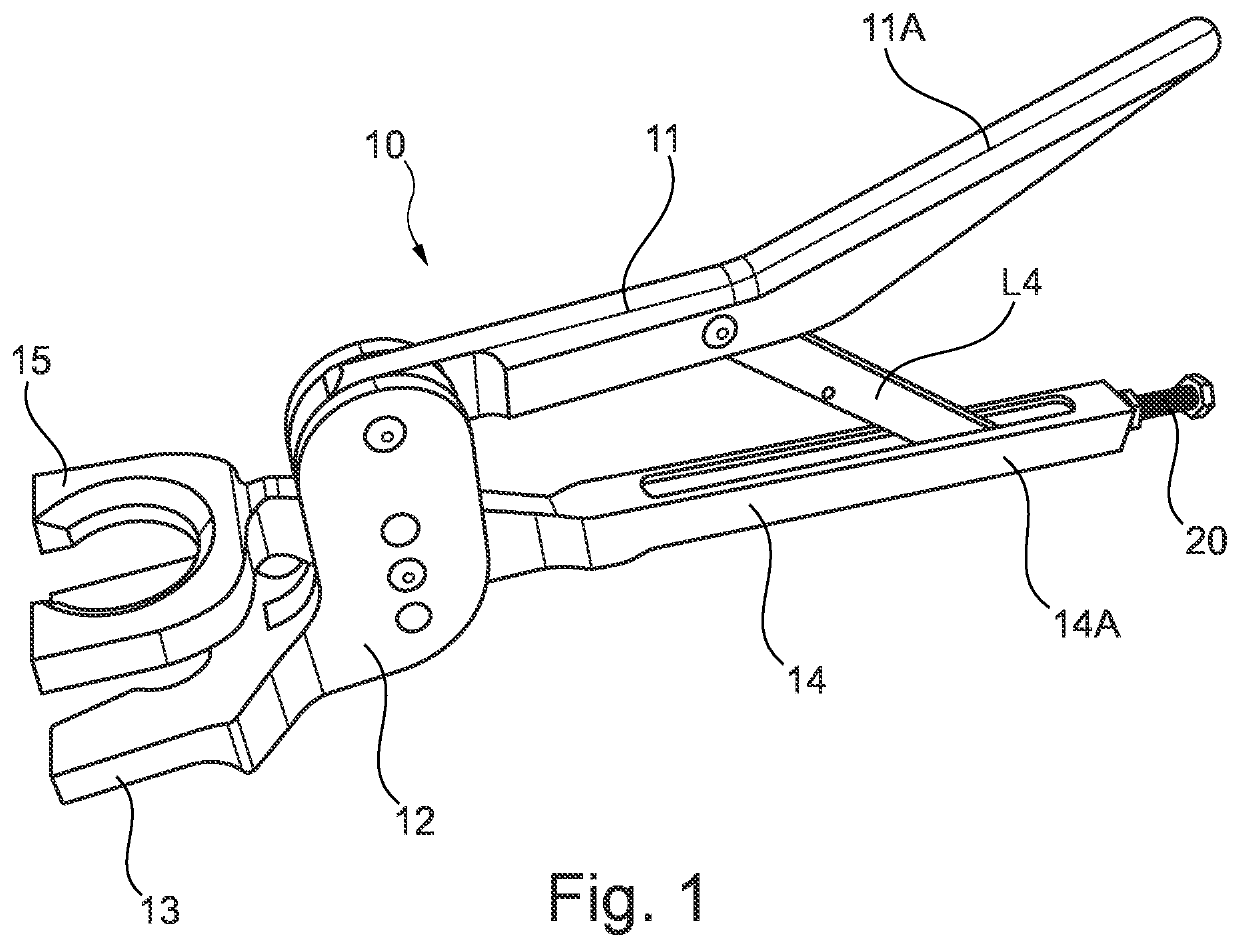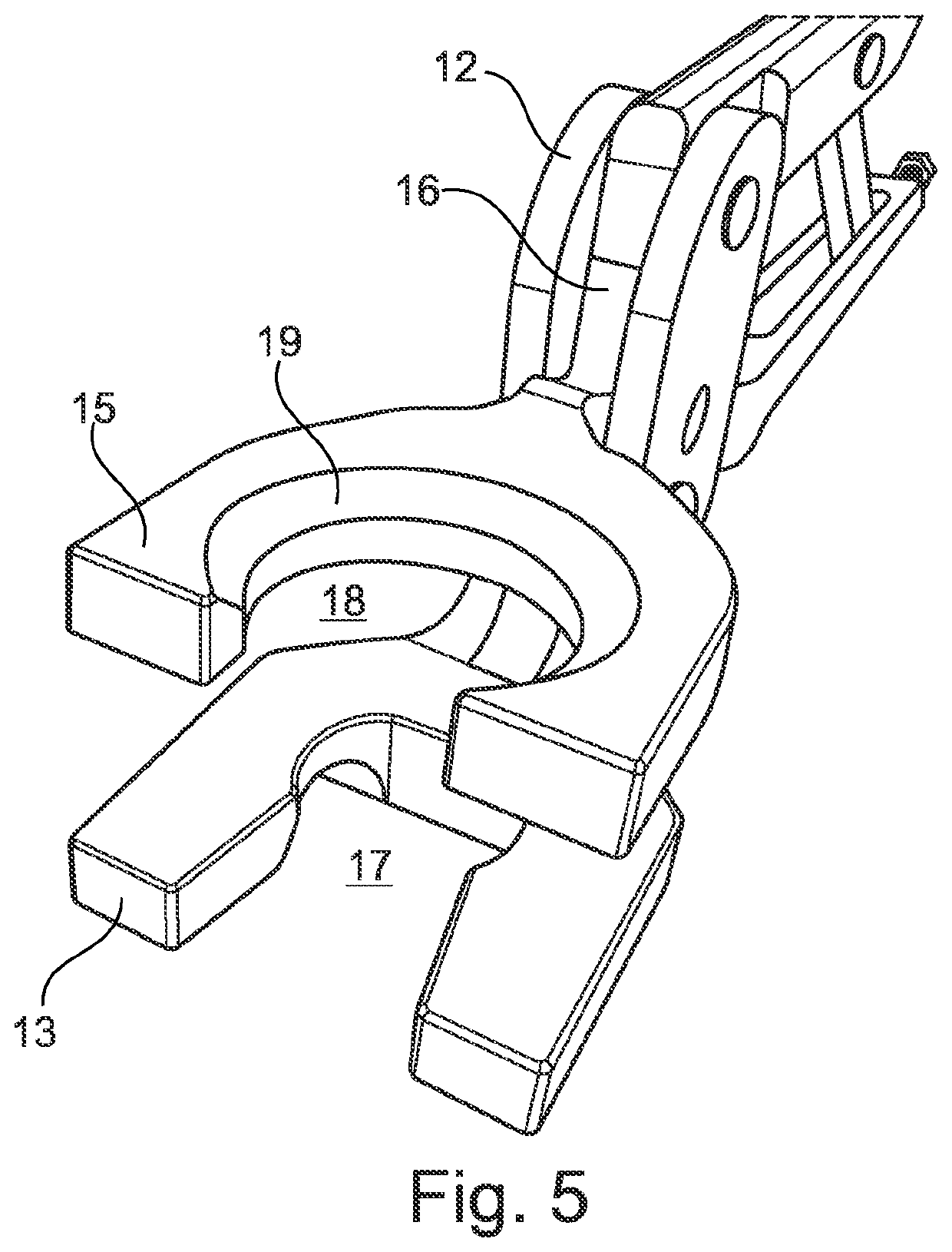Surgical tool
a surgical tool and tool body technology, applied in the field of surgical tools, can solve the problems of stem displacement or accidental dislocation, femoral head wear, stem displacement or wear, etc., and achieve the effects of high separation force, high mechanical advantage, and control of force applied
- Summary
- Abstract
- Description
- Claims
- Application Information
AI Technical Summary
Benefits of technology
Problems solved by technology
Method used
Image
Examples
Embodiment Construction
[0055]FIGS. 1-4 show a surgical tool 10 according to one embodiment of the invention, the tool being suitable to separate a femoral head from a femoral stem.
[0056]In general terms, the surgical tool uses a four bar chain and crossover joint to provide a high mechanical advantage, converting a gripping force by the surgeon on two handles into a separating force at two jaws engaging the femoral head and stem.
[0057]A four bar chain arrangement is well known in many hand tools, for example in locking pliers, however it is normally used to provide a clamping or gripping action. In the claimed invention, the opposite is the case in that a separating action is provided.
[0058]The surgical tool 10 comprises a first handle 11, a second handle 14 and a crossbar L4 therebetween. The proximal ends of the handles, proximal of the crossbar L4, form gripping portions 11A, 14A respectively which are suitably sized that a surgeon may grip both gripping portions 11A, 14A simultaneously with one hand a...
PUM
 Login to View More
Login to View More Abstract
Description
Claims
Application Information
 Login to View More
Login to View More - R&D
- Intellectual Property
- Life Sciences
- Materials
- Tech Scout
- Unparalleled Data Quality
- Higher Quality Content
- 60% Fewer Hallucinations
Browse by: Latest US Patents, China's latest patents, Technical Efficacy Thesaurus, Application Domain, Technology Topic, Popular Technical Reports.
© 2025 PatSnap. All rights reserved.Legal|Privacy policy|Modern Slavery Act Transparency Statement|Sitemap|About US| Contact US: help@patsnap.com



